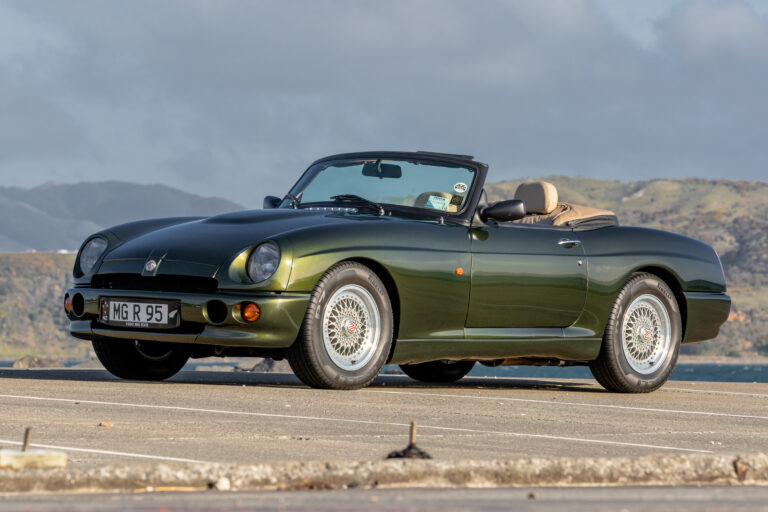Well, love it or hate it, we have to accept the fact that we made this mustard-coloured, Skoda-chassied, fibreglass vehicle and it’s a true Kiwi classic icon now – we are talking about the Trekka.
They were a hard car to like or in any way admire when they came out in the 1960s and to be honest, as kids, we used to point and laugh at them. However, they are our best attempt at a motorcar industry so it’s time to enjoy all there is to know about this truly unique Kiwi-designed farming vehicle. When you see them in the flesh these days, they really have something about them that we can now, actually appreciate and enjoy as the Trekka… is all ours.
It’s time to own it NZ and our cover story this issue is on two beauties, a ute and a station wagon. Enjoy.
“Thanks to Trekka enthusiast Todd Niall, the intriguing tale of this quirky utility vehicle’s singular rise to stardom as New Zealand’s only genuine ‘mass-produced’ car, has been properly told. It’s a story of the founding dynasties of the New Zealand motor industry, political intrigue, and government manoeuvring, recounted in his book The Trekka Dynasty (Iconic Publishing, Auckland). It’s a great read.
For decades, overseas funds were really the only way you could legally bring a new car into New Zealand. That’s because After World War II, the government was becoming increasingly jittery over the worsening balance of exports payments and import licensing was restrictive and competitive.”
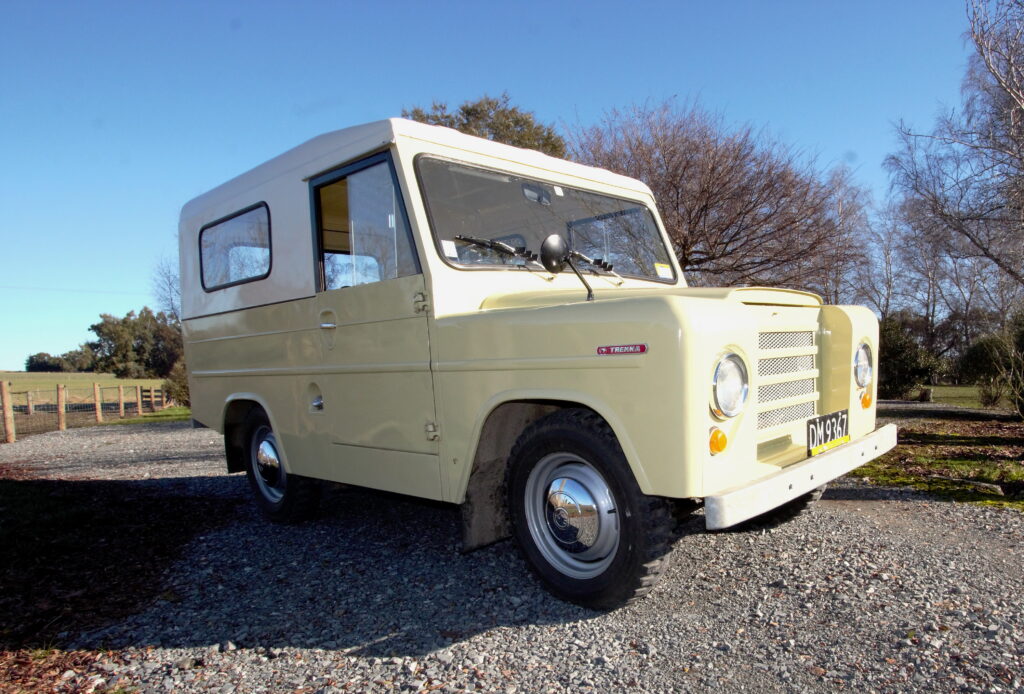
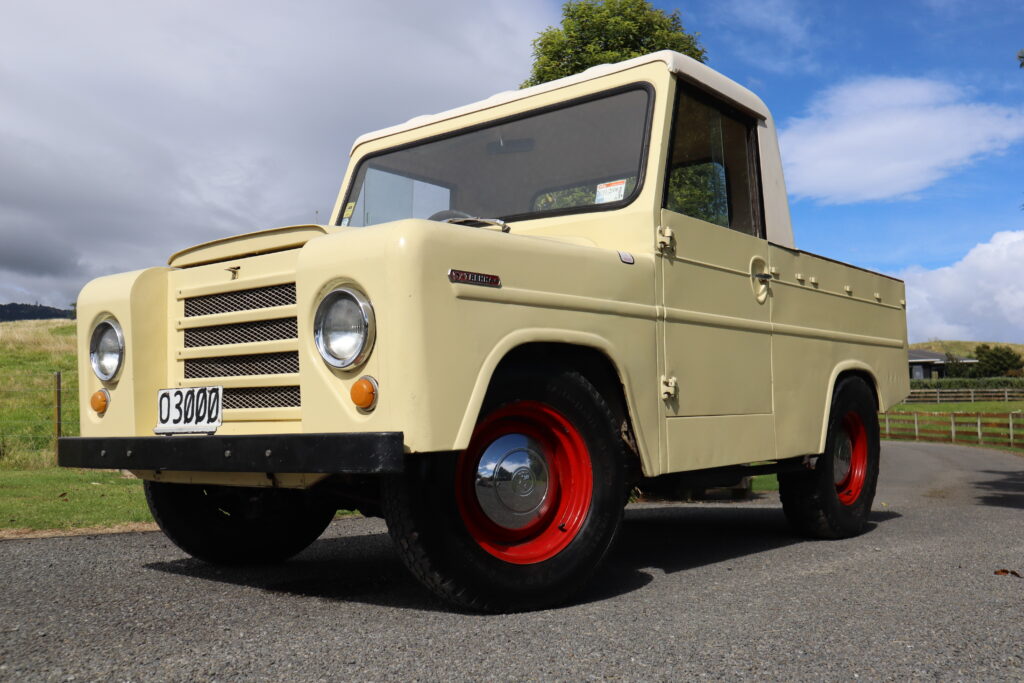
Electric VW Kombi
In the 50s and 60s, the VW Kombi was an icon of the peace, love and freedom movement. That symbolism continues today where it’s not uncommon to see a peace sign, flowers, or other similar iconography on Kombis around the globe. Even Volkswagen New Zealand are in on the act, coming up with the concept of highlighting the Kombi’s carefree roots to help market the recently released successor, the VW IDBuzz.
The IDBuzz is also VW’s first foray into an all-electric van, and while it’s far from VW’s first electric vehicle, it may soon become their most popular. For this epic transformation, they enlisted the help of one of the country’s foremost restoration shops, which also happens to be the business that has likely converted more classics to electric power than any other, Wellington’s The Surgery.
“In VW’s words: “From the moment it was born, the Kombi has been a symbol of hope for a better world. Now, 65 years later, leaving the world a better place for future generations is more important than ever. That’s why Volkswagen is making a shift to a more sustainable future by starting our journey into electric vehicles. And what better way to hit the road on our journey than by bringing back an icon from the past, so it can lead us into the future”.
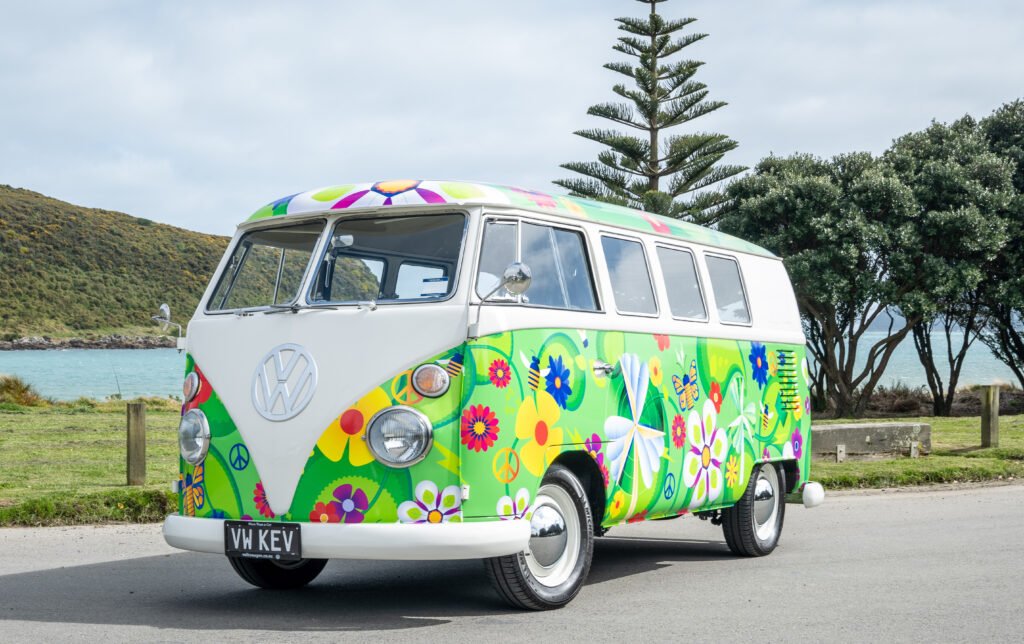
Rolls Royce Silver Cloud III
Back in issue 385 we featured this Rolls Royce Silver Cloud III in the article ‘Royal Rollers & Fancy Fords’ by John Stokes. That article sure caused a bit of a stir as we asked, “where are these cars now?” One reader, Canterbury car enthusiast Bert Govan, got in touch to say “I’ve got one in my garage”. The opportunity to have a close up look at this ex royal transporter was too good to pass up, so we sent our Quinton along for a good look and a test drive.
“Manufactured in 1962, it’s a Rolls Royce Silver Cloud III, which has a 6.25-litre V8 with a GM 4-stage automatic transmission. Interestingly, the gearbox does not have a ‘park’ gear position. When you stop the car, you place it in reverse, and put the handbrake on. When the key is on, that is the equivalent to park. It was getting a little bit tired mechanically when I bought it so we upgraded the engine and refurbished the automatic gearbox. We also fitted Koni adjustable shock absorbers and got the thing handling right for modern traffic. I think I’ve only done 10,000miles in it during the 22 years I’ve had it.”
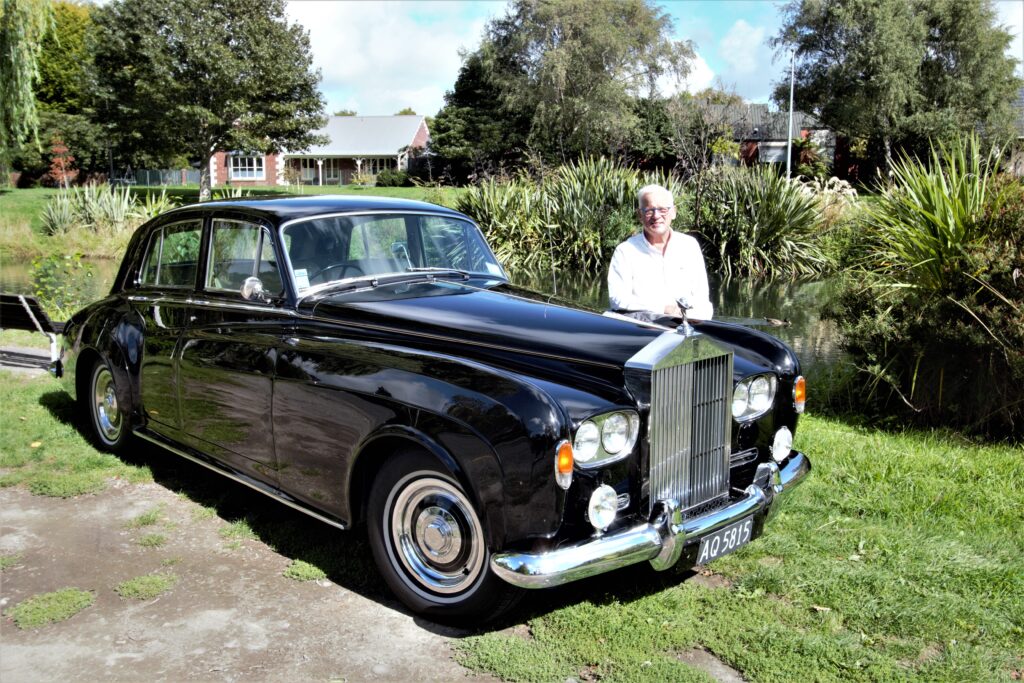
2005 HSV GTO Coupé
Aussie once made stunning, jaw-dropping muscle cars. All the big three Australian motoring manufacturers had a crack and aren’t we grateful that they did. In this issue we examine a 2005 HSV GTO Coupé owned by Wayne Blackwood of Lower Hutt. Vaughn Wilson also reminisces about just how great many of the mighty Holden Monaros were.
“The black 2005 GTO had 75,000 kms and was in great condition. Wayne took it for a drive and his smile told the salesman he had to have it. Wayne’s beloved VZ Maloo was off to a new owner. Wayne has since done 30,000 kms and gets the big, black Aussie out on regular drives, but it is not his daily driver. Being a chippy, Wayne needs the utility of his van for that.”
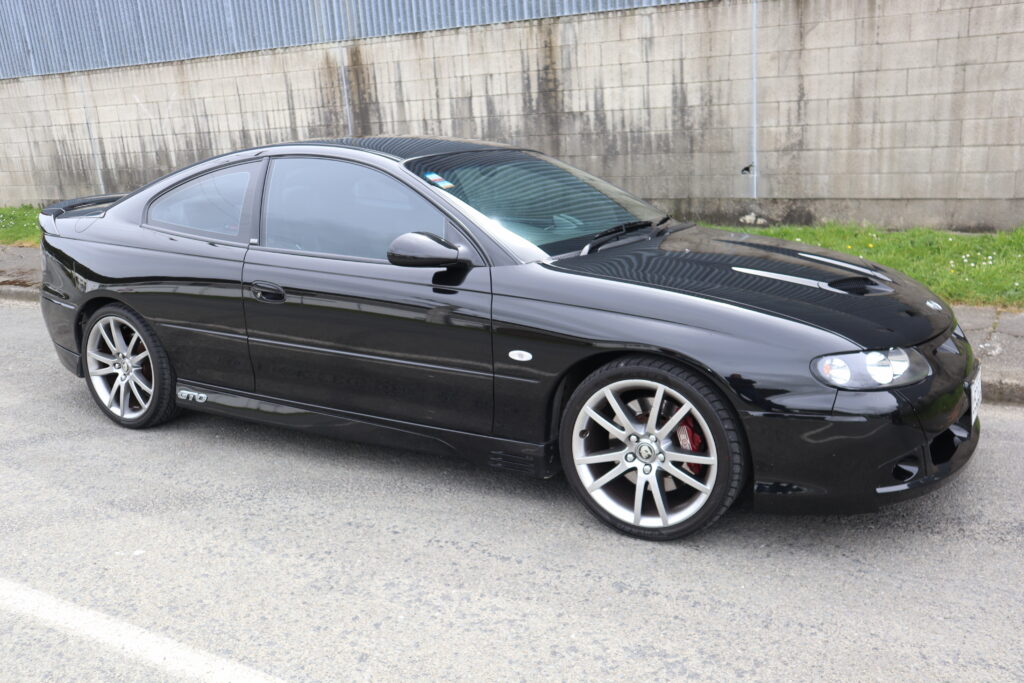
Trevor’s Fords
Trevor Stanley has been a member of the New Zealand Classic Car magazine team since about issue number two back in 1991, and many of his classic cars have featured on the cover of the magazine.
Now Trevor is a blue oval badge enthusiast and in this article, shares with us his love of Fords and runs us through the long list of Fords he has owned, restored and loved over the past 50 plus years
“My current Ford is a 1965 XP Falcon. I purchased it in 1995 from the lady that bought it from Palmer & Doak, the Ford Agents in Rangiora, at the time, so in effect it was a one lady owner for its first 30 years. It’s almost like new. I have inherited all the original documents from the day of purchase, in September 1965, showing the cost of the car was £1388, 5s, 1d. Converted into today’s currency is equivalent to $2776.50. The car is still original except for the paint which was redone in about 2006, keeping to the original dark metallic Caspian Blue.”
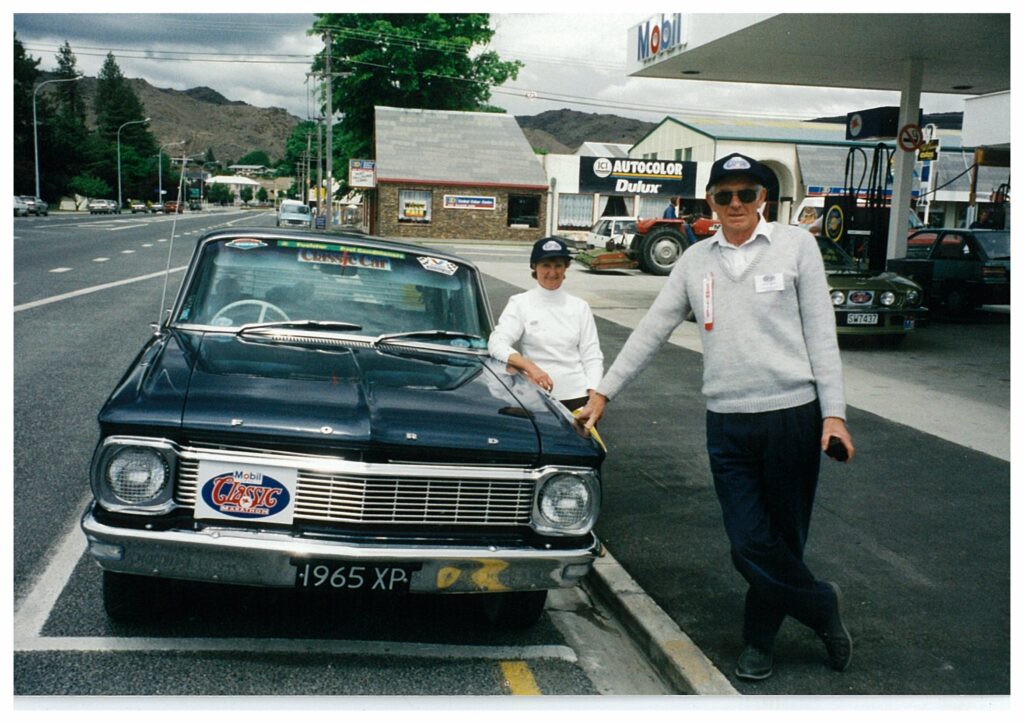
Summer surfing
In the previous issue of NZ Classic Car, issue 390, Gerard Richards wrote a celebration of the 1960s article and explained why he thought the 1960s really was the best decade ever. Well, Gerard is back again this issue and back in the 60s but this time is helping us enjoy all those cars that took us surfing at those glorious Kiwi beaches.
“While any wheels that got you to the surf were good wheels, trendy new surf wagons quickly came into vogue. The VW, particularly the Kombi van, was a number one choice for obvious reasons. Old American cars, like ’30s sedans proved tough in arduous conditions, as did the never-say-die Holdens which were always popular. Station wagons, which enabled surfboards to be poked through the wind-down rear windows of their rust-prone tailgates, were also popular. Others such as Falcons, Vauxhalls, Valiants, Cortinas all had roof racks screwed to their gutters during these vintage years.”
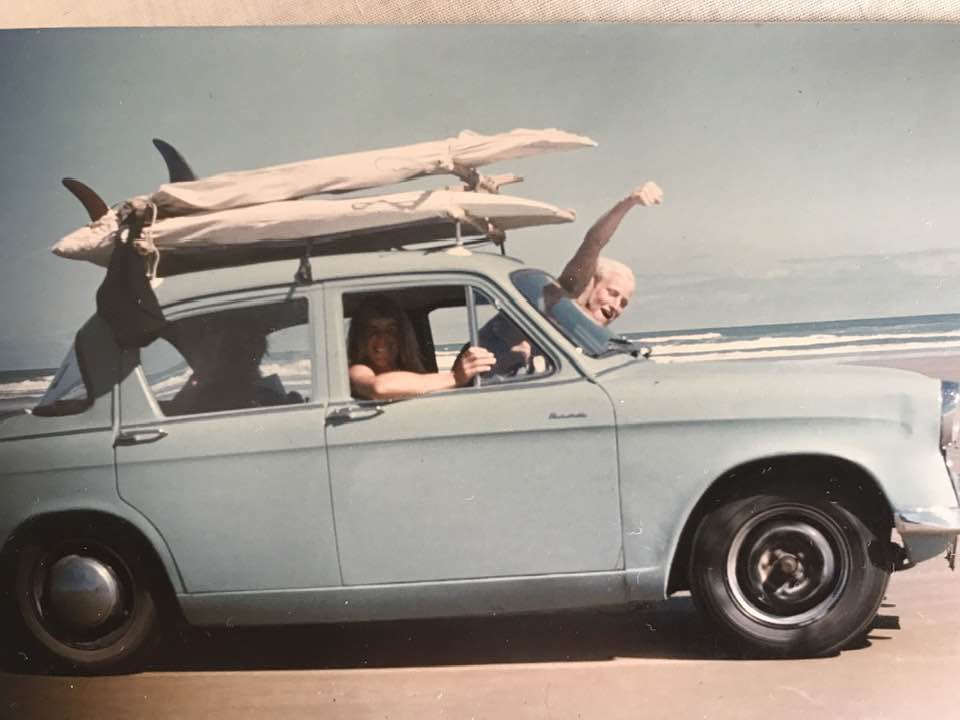
Motorman
The Morris Eight
In his regular Motorman column this issue, Donn Anderson has a look back and extols the virtues of a bit of an unsung hero of New Zealand motoring, the Morris Eight.
“The unsung Morris Eight was one of the most popular cars sold in New Zealand during the second half of the decade before World War II. Although the classic Austin Seven predated the Morris by 12 years, the Morris Eight made a huge impression on an expanding small car market in the 1930s and was likely inspired by the popular Ford Model Y.”

Valiant Wayfarer Ute
Most of us can recall at least one vehicle we regret selling. In some cases it may be because of a meteoric rise in value since offloading a classic that was yet to be appreciated by the market, or as in this case, a ute that was like a best friend. A cool best friend. A friend who anyone would be happy to be seen with.
“Sonja Ireland took over her first Wayfarer when she was 19 years old. Her father had purchased a mushroom-growing business in Whangaparaoa and the Wayfarer came with the assets. It had been used for taking mushrooms to produce markets and would have kept doing so had Sonja’s dad not bought himself a Holden Kingswood to take on that task. Obviously, he was more of a GM man than a Chrysler fan.”
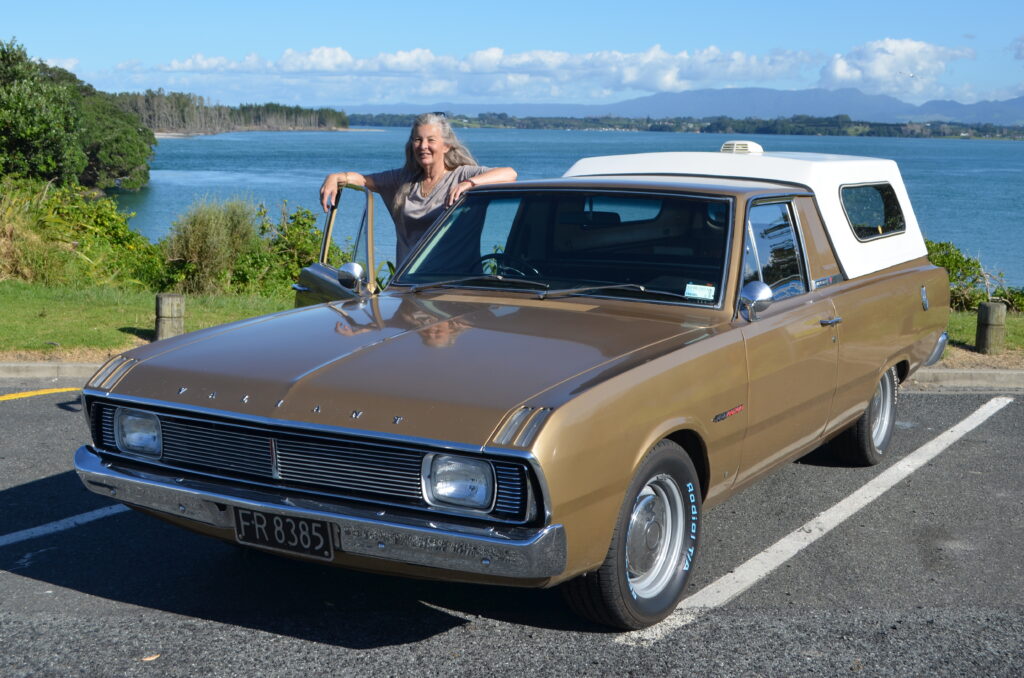
Togs, undies and Corfu driving
Patrick Harlow jetted away to Europe on holiday and enjoyed getting away from it all on an island designed for donkey power that ensures some highly rewarding driving experiences.
“In New Zealand, advertising has given us the expression, “togs, togs, undies.” In short, this means that the further you walk away from the beach wearing togs, especially ‘budgie smugglers’, the closer you will get to being arrested. In the beautiful Greek island of Corfu, the same can be said for driving except the expression would be, ‘road, road, driveway’. It seems the further you get away from the beach, the narrower the roads become and the closer one gets to an automotive insurance claim.”
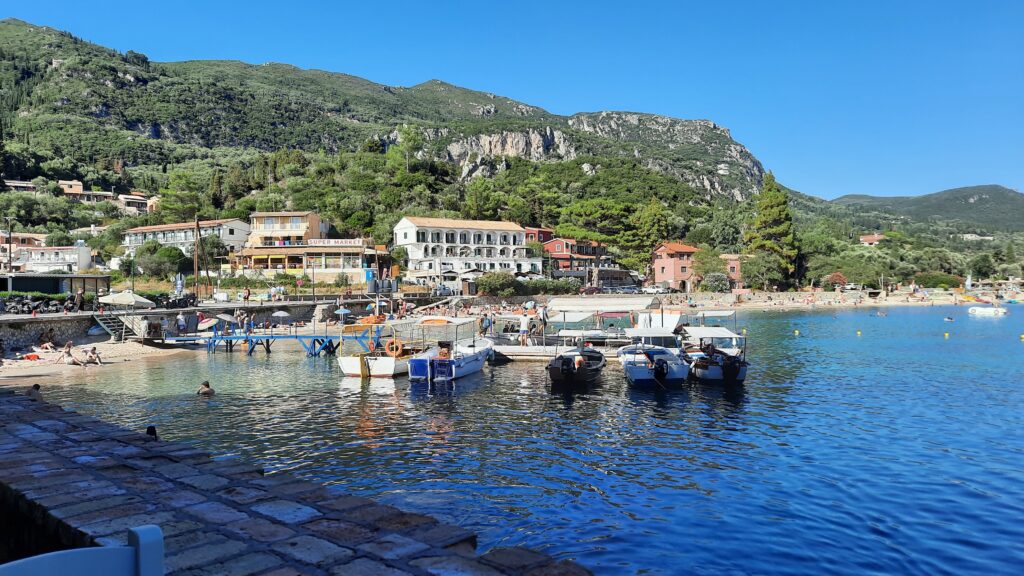
KITS & PIECES
A Buggy for the kids and a truck for dad. Patrick Harlow discovered that the trouble with building beach buggies is that you can really catch the bug.
“By the time 2015 rattled around, however, the beach buggy fad was long over and very few places were still building fibreglass buggy bodies. Initially, Archie thought he would be hunting for a second-hand body but when he went searching on the Internet, he found beachbuggies.co.nz, located just up the road in Auckland. They were producing brand new bodies for two and four-seater buggies. Unable to believe his luck Archie got in touch with the company CEO Rob Schrickel. Rob was, and still is, selling Manx buggies as a basic kit set with as many additional parts as the potential builder requests. Archie purchased most of his ‘buggy unique’ parts for his cars from Rob.”
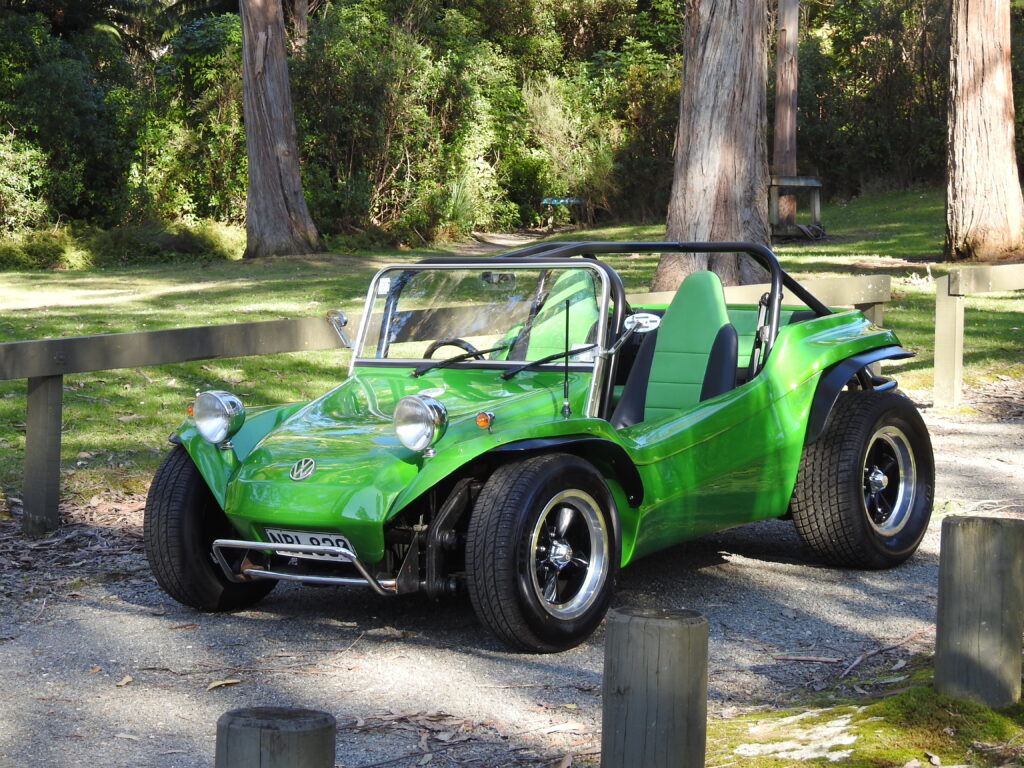
The Stuart Special No 77
Nigel Young gets up close and personal with the Stuart Special No 77. This race car is one of the iconic South Island (New Zealand) built specials that was built after World War II. It is typical of the racing cars of the time and occasionally still appears at vintage events.
“In 1965 Peter Leversedge bought the car from Alec Rattray and has owned it ever since. During Peter’s ownership, it was raced on occasions by Bob Stewart of Nelson, Stewart Quertier, Neil Stuart, Brian Hepburn and John Armstrong.
Peter previously owned and raced the Brain Briggs built Mercury V8 Special No 33, for about three seasons. This is now owned by Steve Day. When No 77 came up for sale, Peter decided to buy it as it was the type of car that appealed to him. He preferred to race on loose surfaces rather than pavement, and considered it was a car more suited to that type of racing which it turned out to be.”
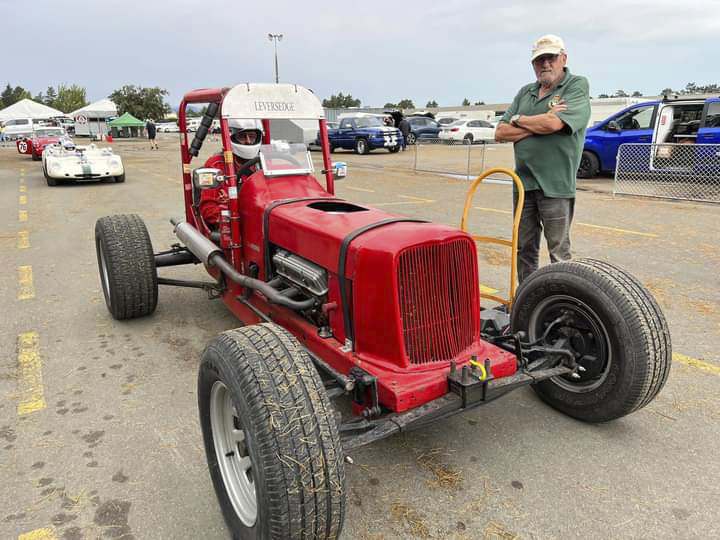
Motorsport Flashback
Sixty years of McLaren
Some 350 friends of the McLaren Motor Racing team assembled in southern England in early November to celebrate the sixtieth anniversary of a racing team formed by an extraordinarily driven but quiet Kiwi racer/engineer, and a forthright American lawyer.
“The organisers had assembled a wonderful line-up of interviewees from longtime mechanics, designers like Gordon Coppuck (who even wore a tie to breakfast), Steve Nicholls – designer of the 1988 all-conquering MP4/4 – and former employee Adrian Newey.
The man behind the first carbon-fibre F1 car, John Barnard, gave no hint of his prickly reputation and surprised us by referring to his friendship with Ron Dennis – no one saw that coming. McLaren world champions Emerson Fittipaldi and Alain Prost joined by video link but Mika Hakkinen, world champion in 1998 and ’99, was there in person and charmed us all with his blend of modesty, Finnish humour and delicate touches of boastfulness.”
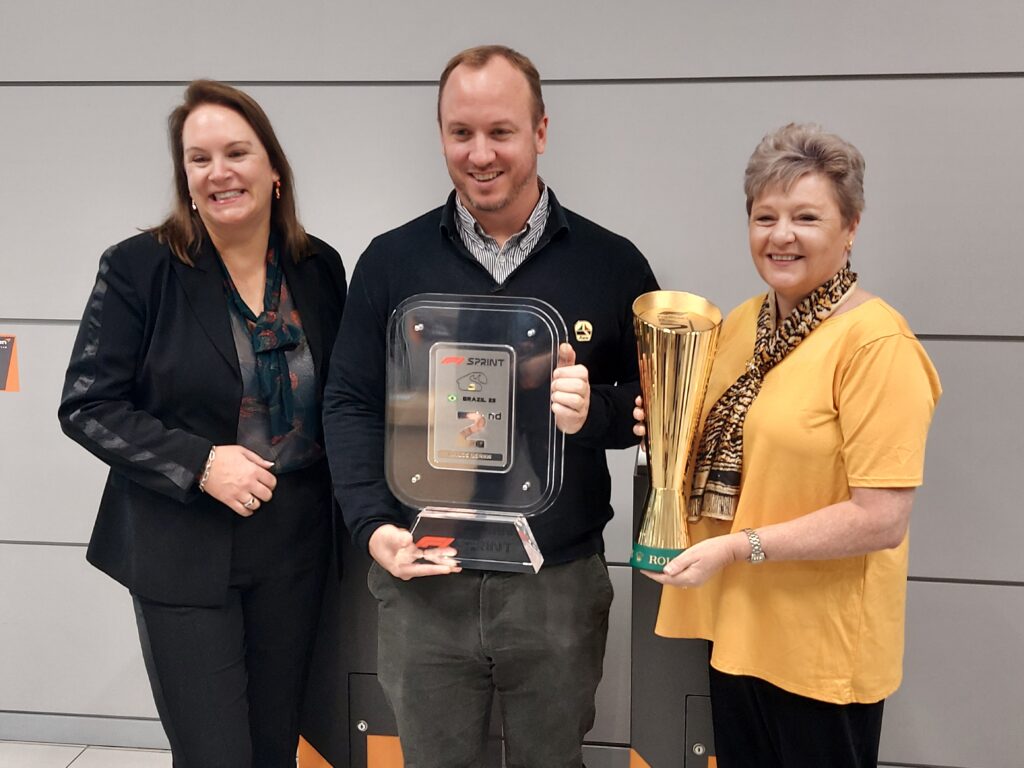
Marketplace Report
Right car – right time
Porsche fans are coming to see the 986 Boxster as one of Porsche’s most significant cars
“The original Porsche Boxster was the right car at the right time. A sports car which harked back to the glory days of two- seat, mid-engine Porsches like the 550 Spyder and 718 RS. Porsche showrooms throughout the world, but particularly stateside, just couldn’t sell them quick enough.”
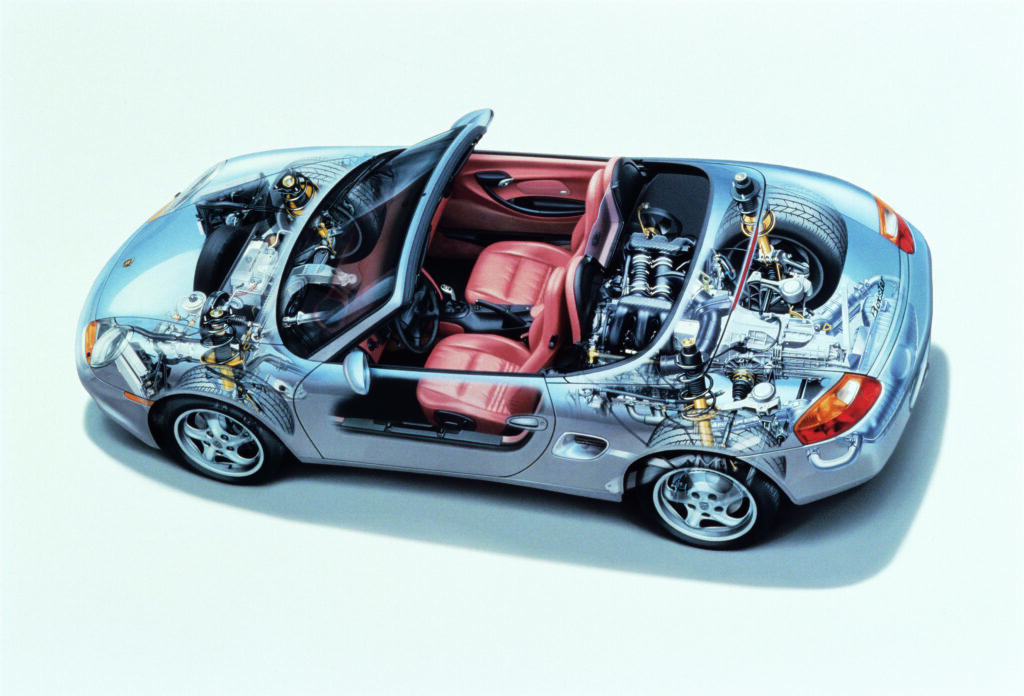
PRICE ON…CERTIFICATION By Greg Price
Classic bycatch of criminal trap
Do we really need recertification for old cars whose only crime is a lapsed rego?”
“I’ll start by saying “back in the good old days”, to get an unregistered car or motorcycle back on the road, it was simply a matter of taking a few details down to your local post office and registering it, paying a small fee, getting some new number plates (if you didn’t have the old ones) and walking out.”
Book review
JIM CLARK EN FRANCE
Dominique Vincent. Published 2022 by Coco-B editions. ISBN 978-2-9583117-3-5. 59 Euro (plus postage)
“If you’ve seen the recent documentary movie on Jackie Stewart, which included some brilliant racing footage from the 1960/70s, you’ll recall that he moved to Switzerland because he said he was paying the UK taxman 93% of his income. Other celebrities such as Noel Coward made similar moves, as did double world champion Jim Clark who chose Paris as his home from 1964.”
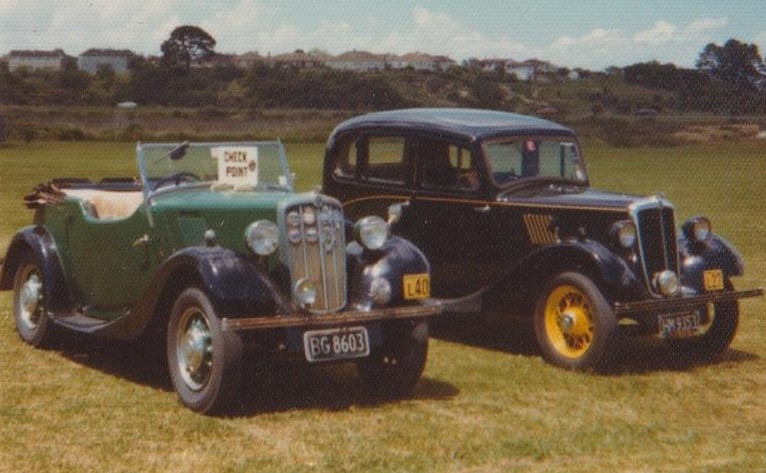
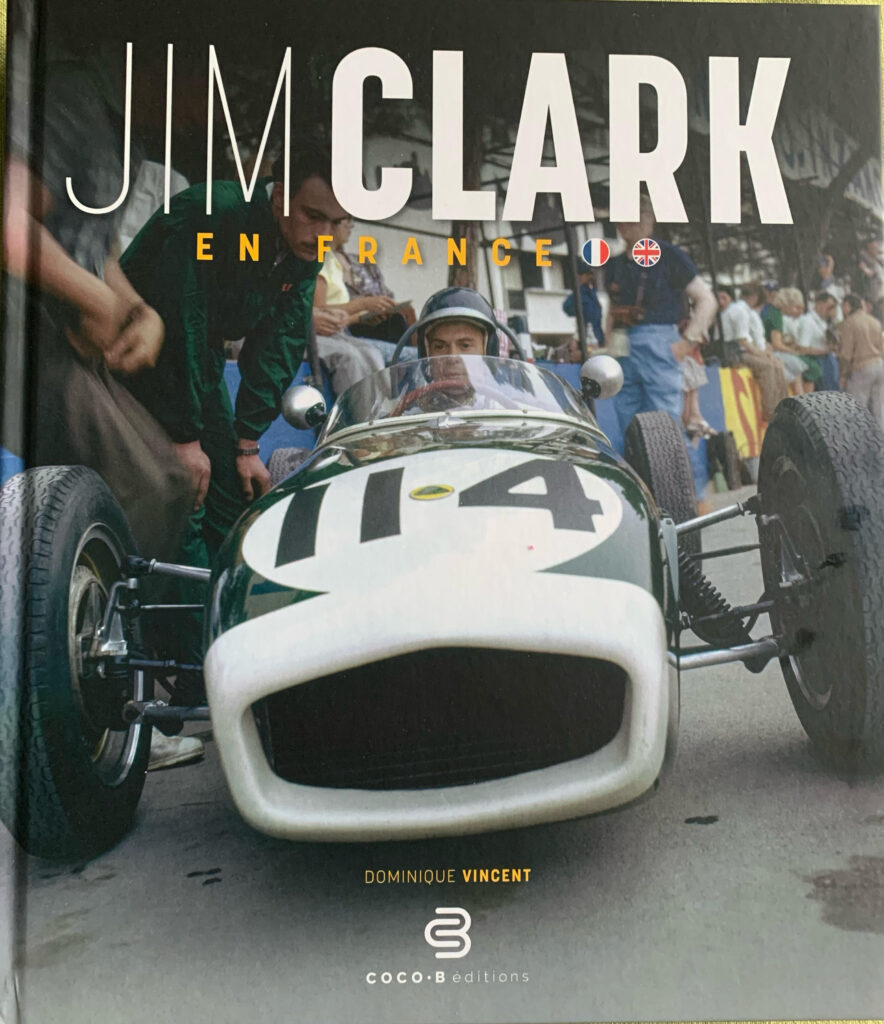
Behind the garage door
The lure of a local legend
Steven Chappell has been tinkering with engines for as long as he has been able to hold tools. He is an aircraft engineer who served his time with British Airways. New Zealand was just supposed to be a stopover on his big OE but to date, he has not got around to leaving.
“The big decision was made to start again with someone else’s discarded project. In this case, it would be an unfinished McLaren M6GT. Not only did it have good aerodynamics combined with kerbside appeal but it could trace its heritage directly back to the car designed by racing legend Bruce McLaren. The moulds had been taking off an original M6GT while it was touring the USA. Another New Zealand racing legend, Graham Kerr, brought an example back from the US in the late 1970s and several bodies had been manufactured in Feilding.”

Events and news
Autospectacular Dunedin 2023, Kiwis race hard at Laguna Seca, Meguiar’s raises $4.5K for Prostate Cancer Foundation, the upcoming Southern Classic, Levels Raceway Timaru, 9–11 February 2024
To purchase a copy of this edition, head to our online store, here.


